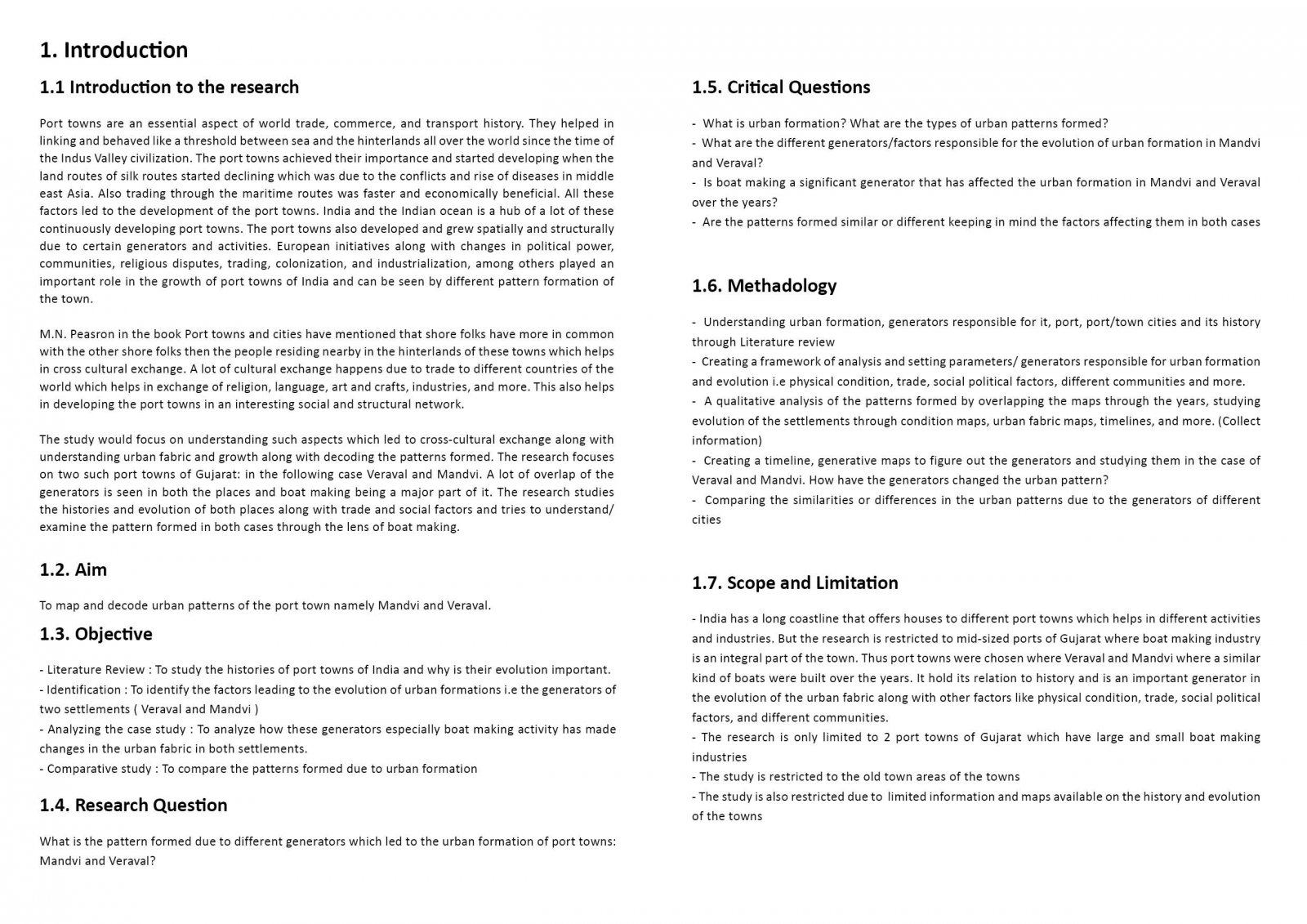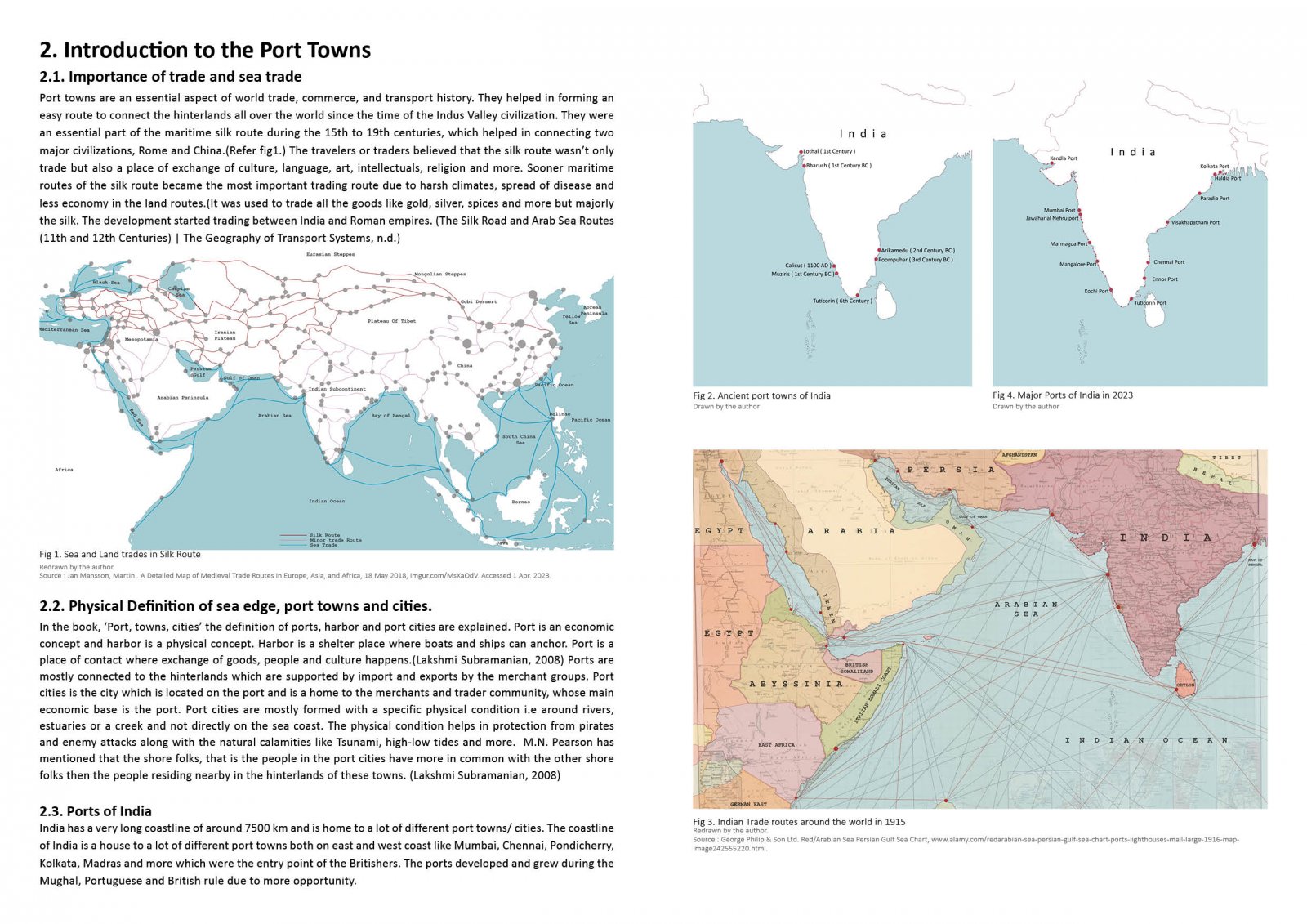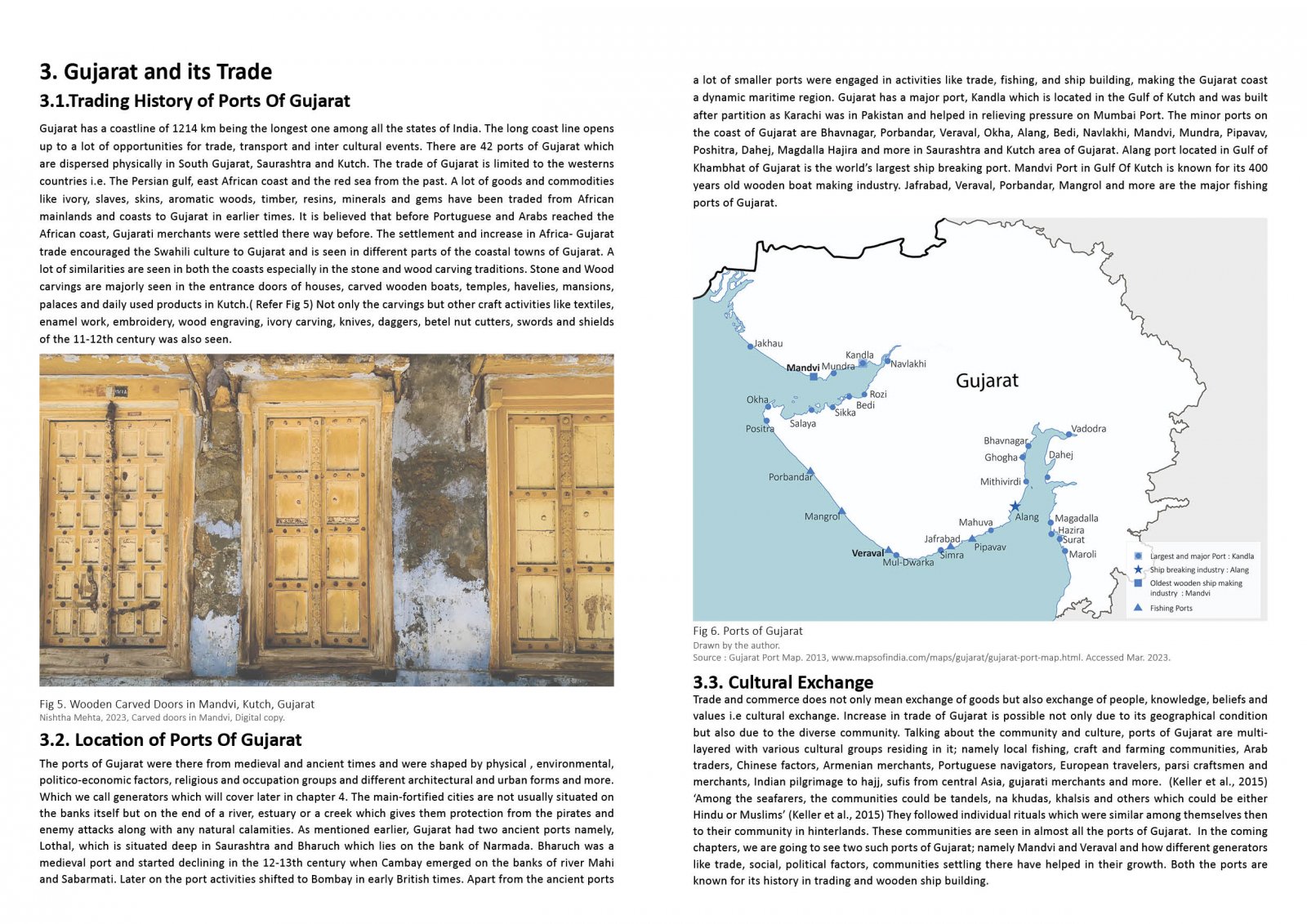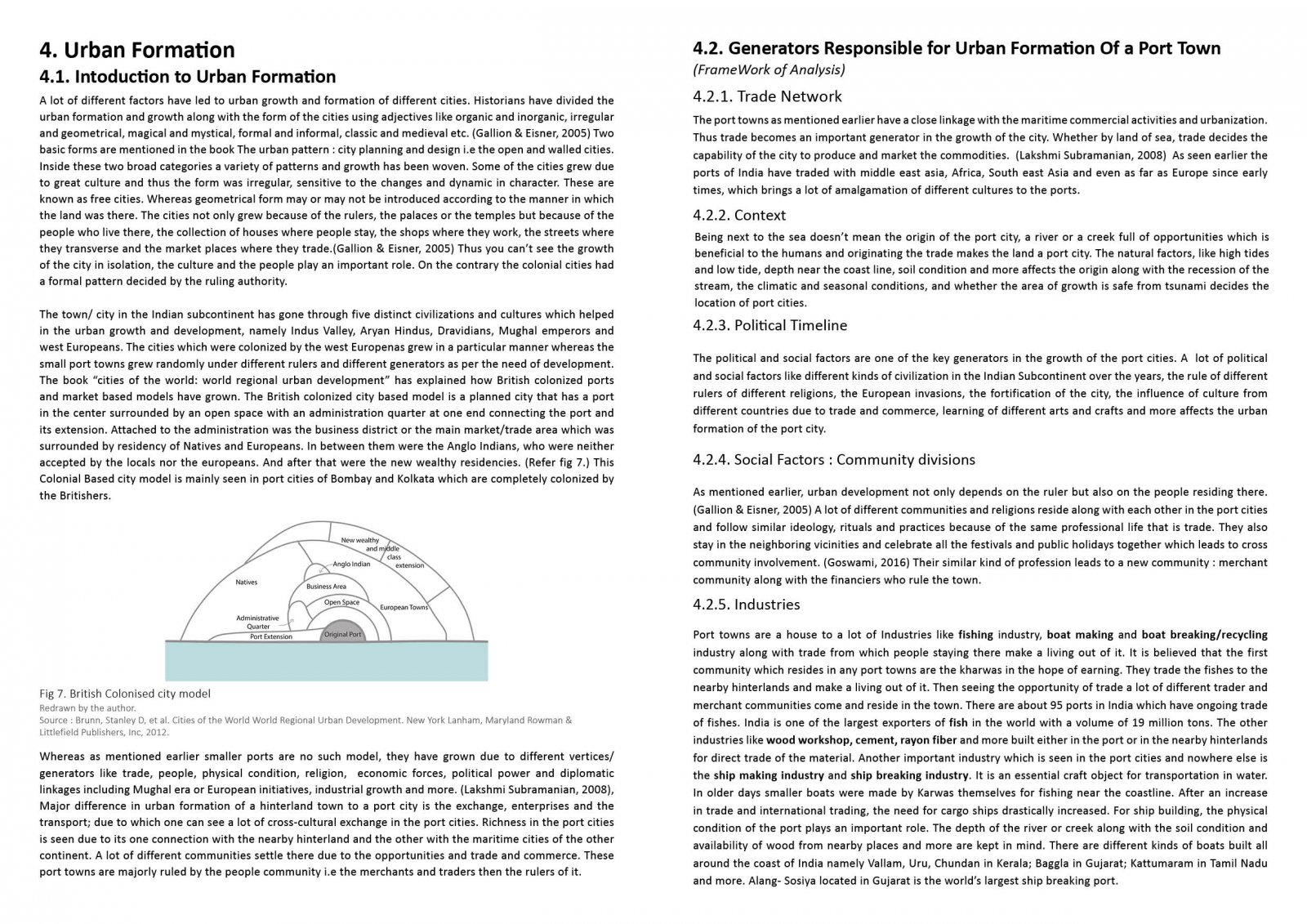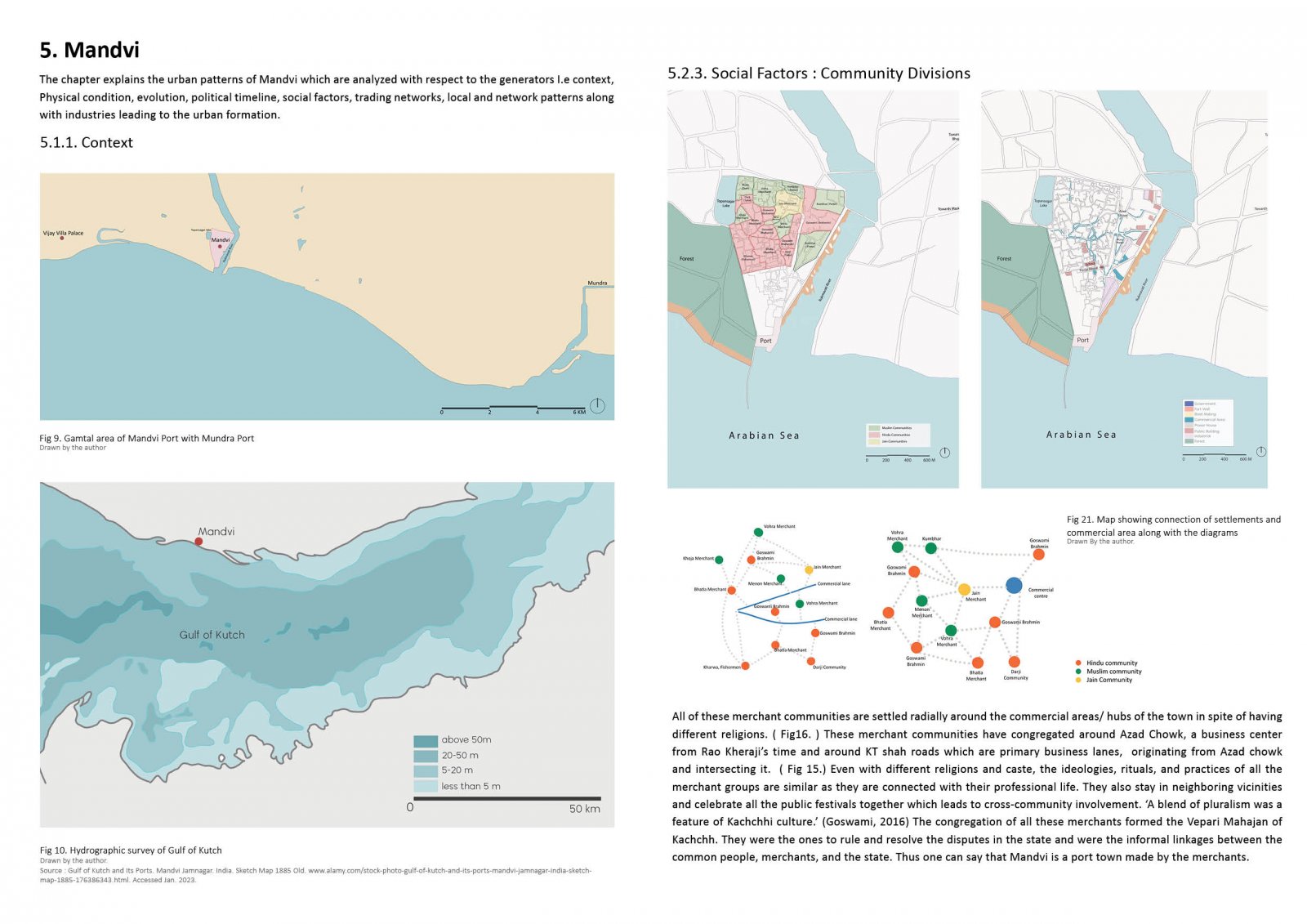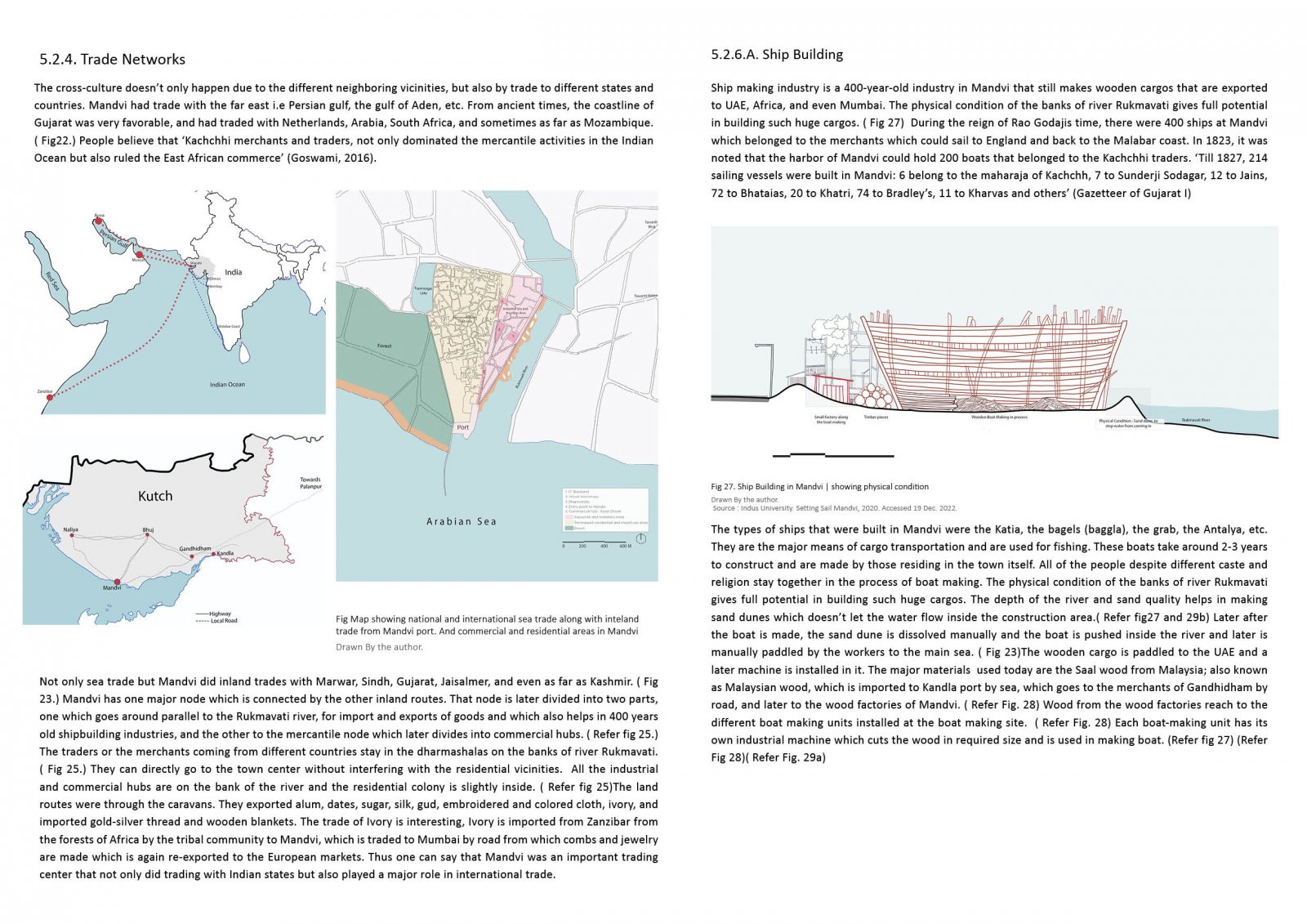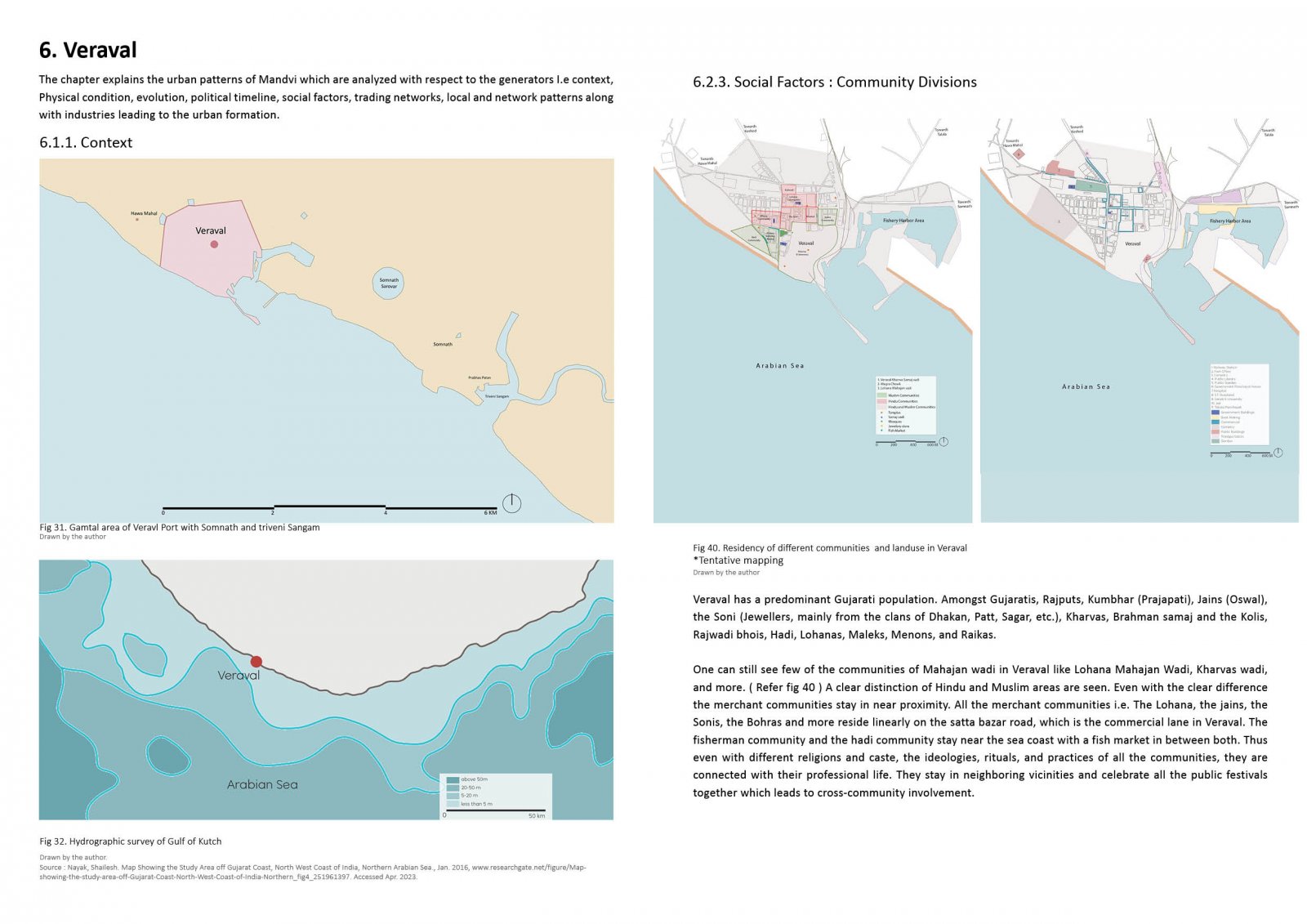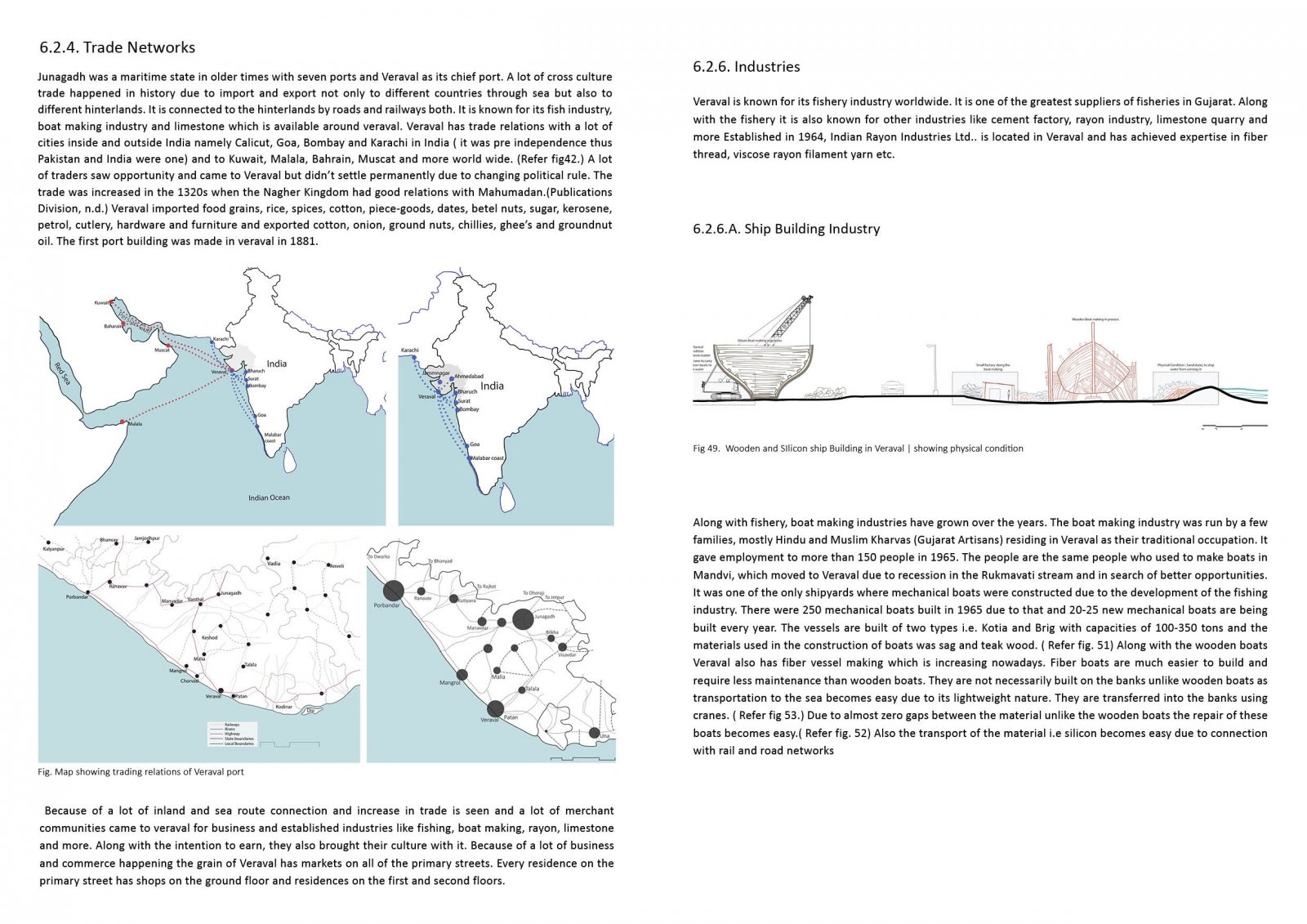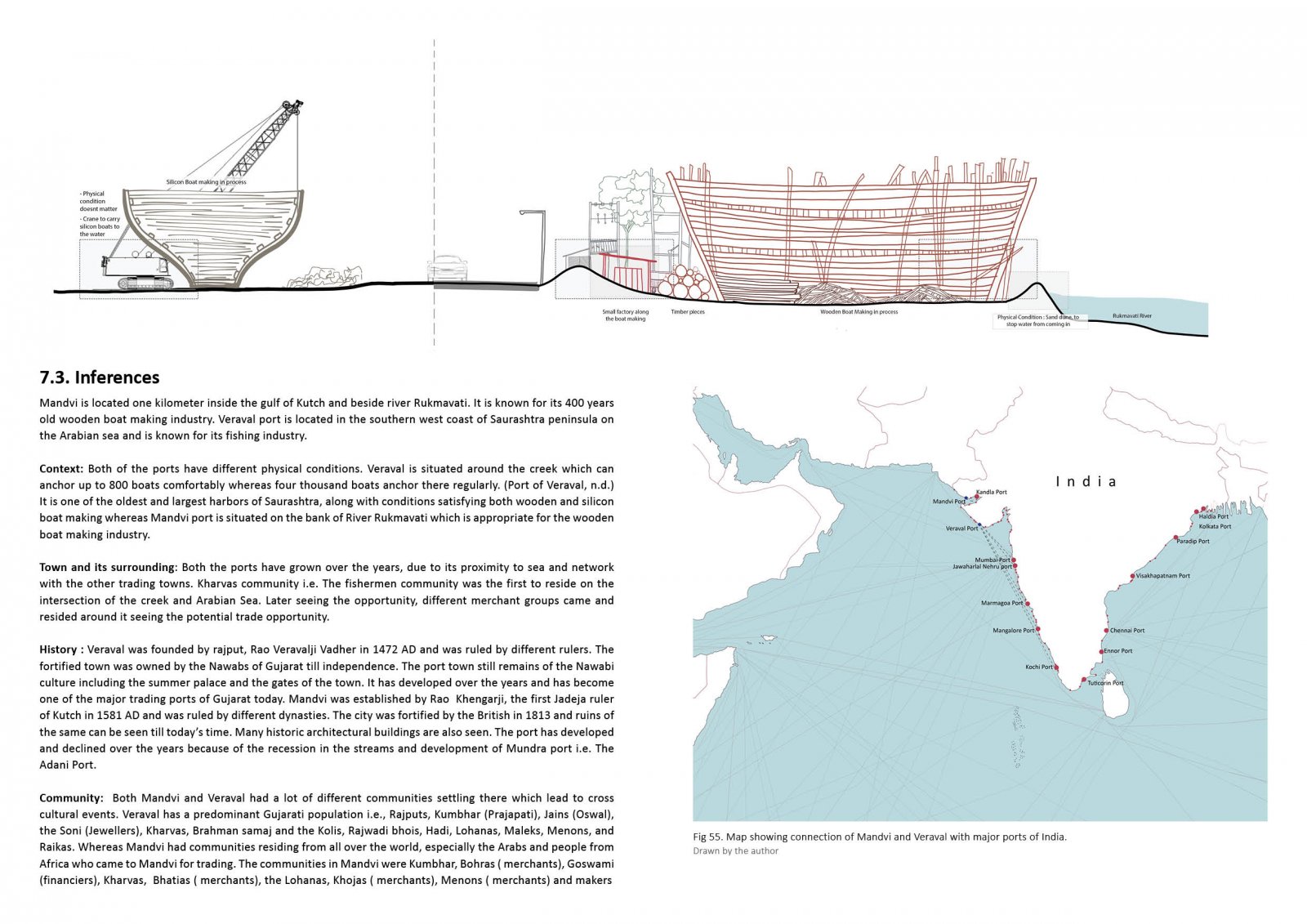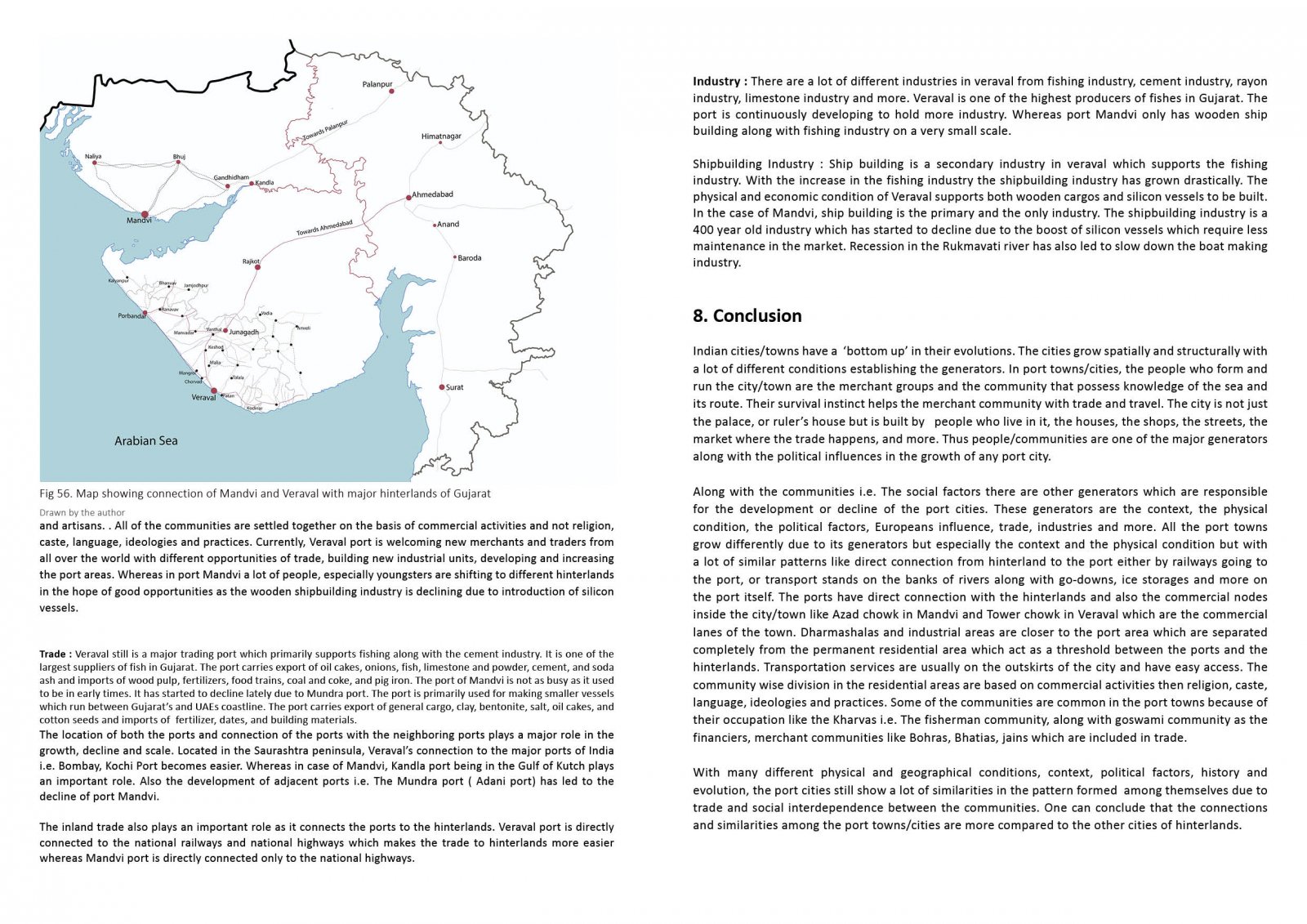Your browser is out-of-date!
For a richer surfing experience on our website, please update your browser. Update my browser now!
For a richer surfing experience on our website, please update your browser. Update my browser now!
Port towns play an important role in trade and commerce. From the time of the silk route, maritime trade was an essential part which connected different worlds. They act as a threshold and connect nodes between the sea and the hinterland cities. India has a coastline of 7516 km which is a house to 14 major and around 180 minor ports. These port towns developed and grew spatially and structurally due to certain generators and activities over the years.
This research explores the urban pattern of two of such minor port towns of Gujarat, India namely Mandvi and Veraval. Mandvi located in gulf of Kutch was founded in the 15th century and is known for its wooden ship building industry whereas Veraval is in Saurashtra peninsula and was founded in 15 the century and is famous for its fishing industry along with boat making industry. The towns reveal the pattern and evolution through different factors such as context, political influences during British Raj, social and community divisions, trade networks, spatial structures and trade supportive industries especially boat making and others. The towns helped in understanding the interdependency of each of the generators which helped in growth of the city.
The research concludes by comparing the two port towns of Gujarat and finding the similarities and the differences among both of the towns and elaborating on generators along with the reasons for their decline and growth of the ports. Both of the towns having different context, physical conditions, political timeline and more had a lot in common than their neighboring hinterlands.
